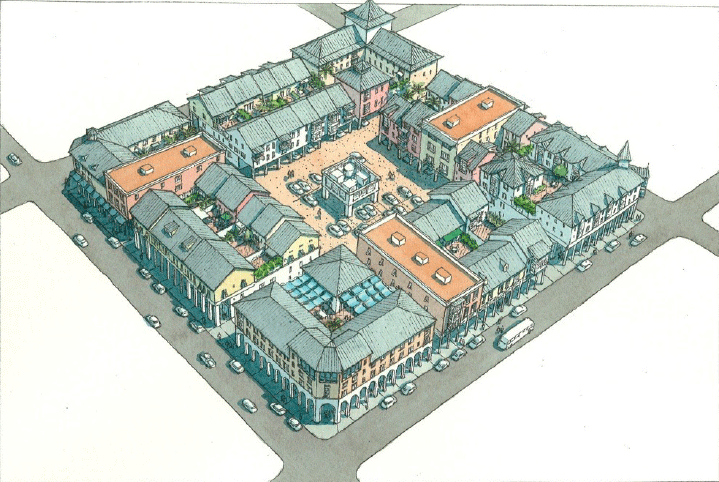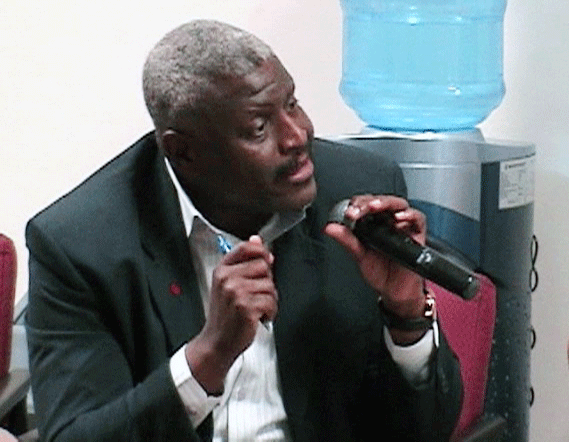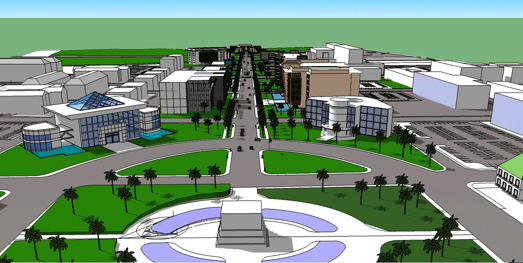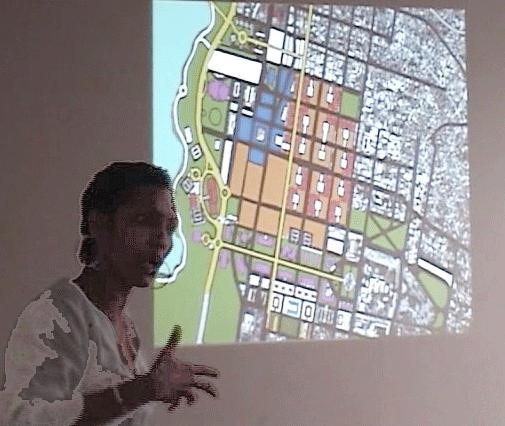Impasse?
What’s blocking the capital’s path to reconstruction?
Part 2 of 3
Port-au-Prince, June 9 - Not everyone is satisfied with the government-led plan to reconstruct Haiti’s downtown using the Prince Charles Foundation/Duany-Plater-Zyberk (DPZ) proposals.
As soon as the declaration of “utilité publique” (“public interest”) was defined, downtown property owners protested with interviews and a petition deploring the potential expropriation of their properties. In a letter issued last November and printed in Le Nouvelliste, they asked the government not to create a “little ‘oasis’ at the heart of Port-au-Prince” while ignoring “the urgencies in the overall metropolitan zone.”
Others, alluded to in a Nouvelliste editorial, called for more transparency on how the Foundation and DPZ were chosen.
Haiti Grassroots Watch (HGW) requested that the Foundation respond to questions, and at it agreed. However, when communications officer Joanna Hindley saw the questions – some of which were related to the contract, consultations, and the choice of DPZ – she wrote back that “there are several that I won't be able to answer due to contract confidentiality,” and after that ceased contact altogether.
The Foundation’s plan calls for “urban villages” for “middle class people” – what might be privately owned condominium-style blocks potentially “off the grid” with their own private parks, water and electricity, according to Hank Dittmar, the Foundation’s CEO, quoted in a March 13 Washington Post column picked up by newspapers all over the US.

One of several examples of a future Port-au-Prince "urban village."
In the same column, Andres Duany (the “D” of DPZ) said the block plan would allow people to “’bypass’ Port-au-Prince’s ‘breathtaking municipal incompetence.’”
The municipality’s “first citizen” was already skeptical of the Foundation/DPZ proposal but Duany’s comments sent Mayor Muscadin Jean-Yves Jason over the edge.
“Port-au-Prince City Hall suspended all relations with the Foundation two months ago,” Jason told HGW in an email interview last month.
Speaking at the May 19 meeting with property owners, the mayor noted that he was tired of foreign domination of the reconstruction process.

Port-au-Prince Mayor Muscadin Jean-Yves Jason speaking at a May 19 meeting
with downtown property owners. Taken from a video of the event.
“I have lost count of the many international forums and conferences on Haiti and especially its reconstruction,” he said.
“What has been the real implication of Haitians, and especially Haitian citizens, in this process? They always say that Haiti is present via government representatives. Maybe. But what is the proportion of the Haitian actors, in comparison with the other actors?” he continued.
A Haitian Plan
Even prior to his differences with the Foundation plan, Jason asked the Petion-ville-based architecture firm Groupe Trame, and an associated group, the Haitian Center for Planning and Development Research (CHRAD) to start working on a downtown plan that would be part of a “Scheme for Territorial Coherence” (SCOT in French).
According to Jason, and to CHRAD president Jean Lucien Ligondé, all work has been pro bono to date. (However, Groupe Trame is a front-runner for the US$11 million contract to build the new Port-au-Prince City Hall complex, according to Jason and Le Nouvelliste.)

A view of the "Avenue of Ministries," from Groupe Trame/CHRAD's May 19 presentation.
At the May 19 meeting, Jason told property owners that the Foundation plan had many shortcomings, as noted in a Trame/CHRAD assessment obtained by HGW.
Among other criticisms, “[t]he planning proposal is written… without one trace of on-the-ground research” and “cannot in any way be considered as the basis for reflection or planning… for the capital’s downtown,” the document says.
In contrast, Trame and CHRAD say their proposal is based on hundreds of pages of diagnostic reports (sociological, economic, drainage,) which take into account participatory meetings.
At the May 19 meeting, Groupe Trame director Elisabeth Coicou showed slides and talked about their proposal which will assure “mixed” housing (low- and middle-income), tourism-friendly areas (artist’s neighborhoods), and a “revalorization of the seaboard.”

Elisabeth Coicou talking about Groupe Trame's vision for downtown
Port-au-Prince on May 19, 2011.
Speaking to HGW in late May, CHRAD’s Ligondé said he and his colleagues, who are paid salaries based on other projects, or via Trame, have worked tirelessly on the Port-au-Prince proposal because “we want to show that there are Haitians who can think about the reconstruction.”
Trame/CHRAD and City Hall asked participants at the May 19 meeting – representatives of Haiti’s biggest businesses and the elite families who have dominated the country for decades – to propose commissions that will consider five challenges associated with the plan: land ownership, security, financing, zoning, and moving the commercial port far to the north of downtown.
Coicou explained to HGW: “We want them to participate: ‘What’s your vision? How do you want to see the new capital?’”
But there are other visions in the works.
And who has the right to participate?
See Part 3

